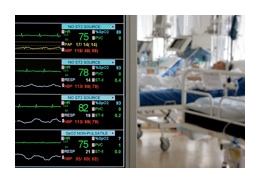
One of the key functions of an anesthesia management organization is supply chain management of anesthesia equipment and medications. This aspect of management can be challenging in several respects. Especially in the current healthcare climate, mitigating overhead costs is a priority for management entities, hospitals and surgical facilities. One of the mechanisms for reducing costs is to join a GPO, or group purchasing organization. GPOs leverage the collective buying power of their members in order to negotiate discounts from vendors. Some of the more prominent GPOs in the healthcare industry include MedAssets, Amerinet, Novation, Premier and HealthTrust Purchasing Group.
Purchasing equipment and supplies external to a GPO involves ordering from a variety of re-distributors. These are often large organizations that purchase medications and equipment from the manufacturer and then sell it to healthcare facilities and practitioners. Several large re-distributors maintain regional offices and warehouses throughout the country and have an extensive system of sales representatives, online ordering and tracking platforms and rapid delivery cycles. Re-distributers are typically competitive with pricing. Research and negotiations with such companies can lead to cost savings.
Facility storage space can present another logistic challenge, especially in smaller, office-based surgical practices. Ordering frequency can vary significantly based on storage constraints. Tight inventory management and frequent ordering are common when storage space is limited. The challenge this presents is obtaining necessary equipment and supplies in time for surgical procedures. Inclement weather, backorders, and logistics complications with manufacturer, vendor or the delivery service can complicate matters significantly.
Medication supply management presents its own set of challenges secondary to a variety of factors. Over the last several years, pharmaceutical firms have dealt with manufacturing challenges in the production cycle of critical anesthetic medications such as propofol, creating lengthy back-orders. Management companies and surgical facilities have a difficult time obtaining important anesthetics during the back order period. When they are able to obtain such anesthetics, they tend to overstock in order to avoid a shortage if another backorder period occurs. The challenge then becomes ensuring that the stored medication are utilized before their expiration date. An appropriate inventory tracking and logging system has to be in place for medications. In addition, many anesthesia medications are controlled substances. Controlled substances have their own set of regulations issued and enforced by the federal government. Ordering, logging and storing these medications must be performed carefully in accordance with these regulations and guidelines.
Additionally, manufacturer recalls for medications occur periodically. As an example, occasional defects in the manufacturing process can result in medications with foreign substances such as pieces of glass or metal from their containers. In such an instance, the manufacturer will track the medications by their lot numbers and request that the end user return all the medications that belong to the lot number in question.
Anesthesia management companies can leverage technology to simplify the tracking of equipment and medications at remote sites. Standardized digital templates for anesthesia supplies and medications can streamline the process of inventory management. For instance, each client site can have a digitized inventory “master” list that is shared between the client site and management entity. This can assist in creating a clear understanding of exactly what is required to be kept on site to ensure the safe delivery of anesthesia and to appropriately deal with any complications. Digital transmissions through PCs, tablets and smart phones can assist the logistics team in maintaining the appropriate quantity of equipment and supplies. These communications can be in the form of interactive PDFs or cloud based applications.
Equipment maintenance is another element of supply chain management. This is usually accomplished by forming a relationship with a competent, experienced, and cost-effective local biomedical equipment specialist. They will periodically inspect and certify that the equipment is functional and safe to use for a defined period of time.
In summary, there are a variety of facets of anesthesia supply chain management for surgical facilities. Each aspect has to be managed effectively to ensure compliance with regulations, to appropriately contain overhead costs, and to ensure the safe and efficient delivery of anesthesia care for surgical patients.
Haroon W. Chaudhry MD

